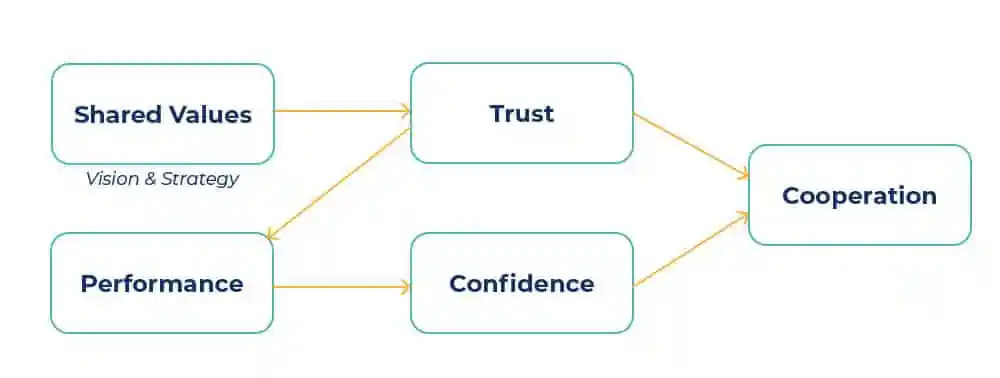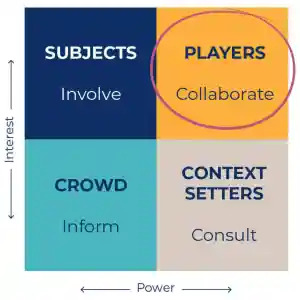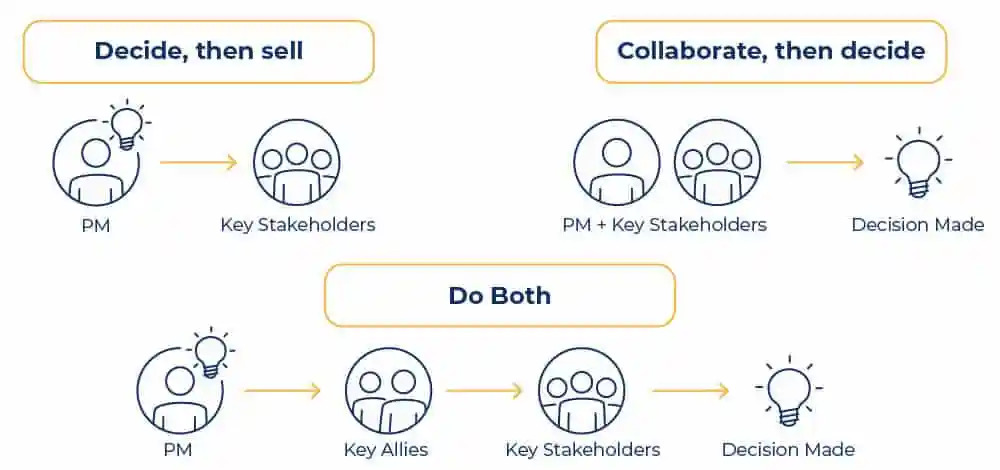
As a Product Manager, your primary responsibility is driving sustainable business growth. That means determining whether there’s opportunity for market penetration and expansion with a given Product, then aligning various stakeholders throughout the organization to make it happen. Product Managers must rally support across multiple teams – engineering, marketing, customer support, fulfillment, and more – and that’s after getting buy-in from the C-suite.
Engaging all of these stakeholders and partners throughout your organization can feel like herding cats. Everyone has their own priorities and agendas, and getting them to align and move in one direction to support product success can be extremely challenging. It requires considerable skill and planning, and a highly strategic approach.
Let’s explore stakeholder management and five best practices for building better relationships across teams and aligning stakeholders to secure their support for important product decisions.
#1: Start with the “why”
It’s important to lead stakeholder conversations by exploring the “why” behind product development. Some product people aim to please all stakeholders by saying yes to every single request or by brokering compromises. This carries the risk of offering a project with a weak value proposition, or a loose collection of features that deliver a poor user experience. When you try to please everyone, you end up pleasing no one. However, saying no to everything doesn’t work either. If we fail to leverage the knowledge and expertise of the stakeholder community, the product suffers and we end up creating adversaries instead of advocates.
By leading with the “why” – the cause or belief behind the product – everyone finds a shared purpose. The “Why” is based upon deep understanding of customers, competitors, and the trends and forces that are driving the market in which you operate. To quote Simon Sinek, “People don’t buy what you do; they buy why you do it.”
#2: Spend time defining the vision and strategy
Once you’ve determined the “Why,” spend time building on that product strategy and a vision that satisfies both customer needs and the organization’s goals. It will be difficult to influence stakeholders and get them on board if you don’t earn their confidence that you’re leading them down the right path. Guiding them with a clear strategy is one way to build confidence.

We recommend using the “Trust, Competence, Cooperation (TCC)” framework, which seeks to explain social trust. The core of the model is a distinction between trust and confidence. Trust is based on social relations and shared values, and the basis for confidence is prior performance. As your track record of success grows, so will stakeholder confidence.
#3: Identify key stakeholders and invest in that community


When it comes to stakeholders, there’s a hierarchy. There are those we want to inform, those we need to consult, and those with whom we want to collaborate. Determining who fits where is particularly important when you have a large group of stakeholders, such as an enterprise environment. We recommend using the following stakeholder analysis tool, which determines who has high interest and high power when it comes to your product:
The players with these attributes will be the key stakeholders, and you should invest the most time and energy with people in this community. Then the hard work begins: giving them purpose and establishing clear roles and responsibilities. If stakeholders aren’t clear on what’s expected of them, confusion will arise, and collaboration becomes muddy. Collaboration requires leadership, so be open, but decisive.
#4: Choose a decision-making strategy
When it comes to decision-making, there are three common strategies for working with stakeholders, and the strategy you choose often depends on your company’s culture. In one model, the Product Managers make decisions then sell them to stakeholders, which can be a lengthy, iterative process that requires negotiation and persuasion. Another model involves bringing stakeholders together up-front and leveraging their collective knowledge to make decisions about the product.

We prefer the third option – one that combines validating your ideas with key allies, then presenting them as a group for input and approval from stakeholders. Instead of proposing recommendations and trying to persuade stakeholders to support them, you have allies lobbying with you, which can make collaboration go much more smoothly. Data is critical to inform decision-making.
#5: Say “Not right now” instead of “No”
You must have a process for saying “No” to stakeholders. You’re not going to agree on everything, and as much as you’d like to say no and move on, it doesn’t really work that way. A decision framework developed by 280 Group can be helpful when pushing back:
- First, seek to understand – find out why stakeholders are coming from a certain perspective and ask clarifying questions.
- Next, focus on facts, not opinions, to determine what values you share. Respond, don’t react. Responding implies critical thinking.
- Determine the trade-offs in terms of value and outcomes. If you choose one direction, what’s the impact?
- Say “Not right now” instead of “No,” and lean on your shared vision and strategy.
This framework can be employed to facilitate stakeholder alignment and streamline the process of getting everyone on board with launching a successful product.


